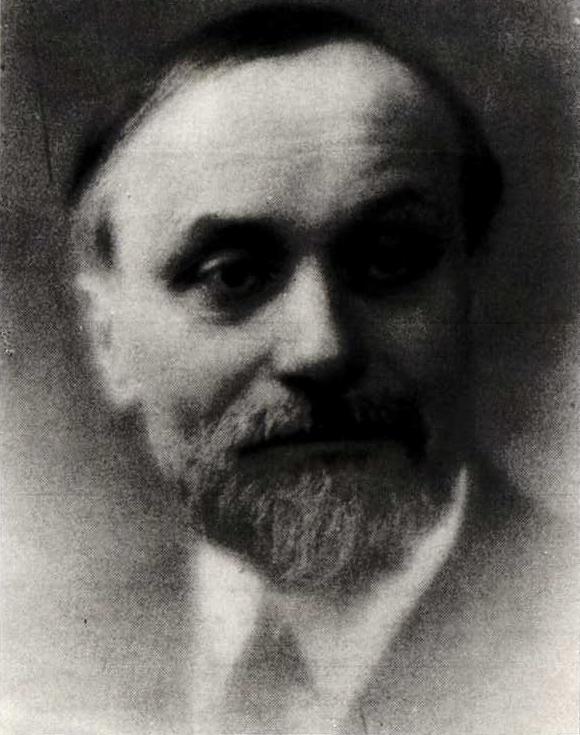In the late 19th and early 20th centuries, France produced a number of famous organist-composers, such as Louis Vierne, Charles-Marie Widor, Marcel Dupré, Maurice Duruflé, and Olivier Messiaen. A neglected member of this period is Charles Tournemire (1870–1939). Born in Bourdeaux, he went on to study with César Franck (1822–1890) in Paris, and eventually became titular organist at the Basilique Ste-Clotilde, where Franck was organist for thirty years. Tournemire was famous for his improvisations, which were frequently based on Gregorian chant melodies. Maurice Duruflé (1902–1986) made transcriptions of five recorded improvisations, of which the Choral-Improvisation sur le “Victimæ Paschali” is often heard in recitals.
Outside of Tournemire’s work as an organist at Ste-Clotilde, he composed eight symphonies (including a choral symphony), four operas, twelve chamber works and eighteen piano pieces, in addition to his many organ compositions. His magnum opus, for which he is best remembered, is his L’Orgue Mystique.
Between 1927 and 1932, Tournemire composed 51 cycles of works for the liturgical year. Each cycle contains five pieces (excluding Holy Saturday, with three): Prélude à l’introït, Offertoire, Élévation, Communion, and Pièce terminale. The first four are always short, but the last, the postlude, often approaches ten minutes in length. The Gregorian Proper chants associated with the particular Feast or Sunday always make an appearance within the elaborate, often mystical textures that Tournemire weaves. Dr. Mária Budáčová explains: “This monumental work was created as a response to the urging of Tournemire’s pupil, Joseph Bonnet, a French organist and composer. Bonnet gave Tournemire the complete collection of Dom Prosper Guéranger’s L’Année liturgique. The former wished to find a composer who would be willing to imitate the concept of Lutheran chorales, which Johann Sebastian Bach transformed into a masterpiece for the Protestant Liturgy. In the following statement, Tournemire explains how he conceived the work:
The master of masters, J. S. Bach, did this and how wonderfully for the Protestant liturgy. I felt it necessary to offer the Catholic Rite a work conceived in the same spirit, with this difference: the greatest of musicians, in the immense part of his work, based his art on the Protestant chorale and the tonal system. As for me, I used the Gregorian chant according to the modal system, which moreover did not exclude chromaticism…[i]
In this way, Tournemire created the Catholic equivalent to J. S. Bach’s Orgelbüchlein, in which the latter set out to compose 164 choral preludes based on the chorales sung in the Lutheran liturgical year, ultimately completing only 46 settings lasting 80 minutes in length. Tournemire’s 51 cycles take approximately 15 hours to perform.
A colossal undertaking, it was successful in its aim, at least in the pre-conciliar era. Henri Gagnon (1887–1961), organist at the Basilique-cathédrale Notre-Dame de Québec for 51 years, wrote to Tournemire in 1933:
“My very dear Maître,
Your L’Orgue Mystique has many fervent performers over here. At Pentecost I played two excerpts from the Office of the Day – whose Finale is wonderfully colorful. Although you may not know it, your name, my dear maître, is associated with many religious feast-days in Canada. I seize the opportunity of telling you how much you are loved and admired by my compatriots and I note with joy that your immense work bears its fruits here; this repertoire, so intimately linked to the beauties of the liturgy, is present daily in the Office, creating the unity you have searched for. I know some young organists, who, in the arabesque of a certain Alleluia, have passed on to me their fervent impressions. I have listened to Marius Cayouette at Saint-Gregoire of Montmorency and to Henry Mercure of Saint-Malo, Quebec, interpret with remarkable style and intelligence certain offices which I have not had the opportunity to play myself. This is to say to you, dear Maître, that in Canada you are one of the benefactors of organ music!”[ii]
Here is the postlude for the feast of Saint Joseph:
Tournemire’s style appears rhapsodic, akin to an improvisation, with striking harmonies that placed him ahead of his time. This forward-looking element of Tournemire’s music is perhaps part of why he remains neglected despite his tremendous contribution to both organ music and sacred musical patrimony of the Church. As the Traditional Mass hopefully returns to more and more parishes, I do hope that L’Orgue Mystique returns to its intended purpose, and is found more at Mass than in the concert hall, and that Tournemire’s magnum opus would also inspire a new generation of organists to learn to improvise on chant in the Mass.

